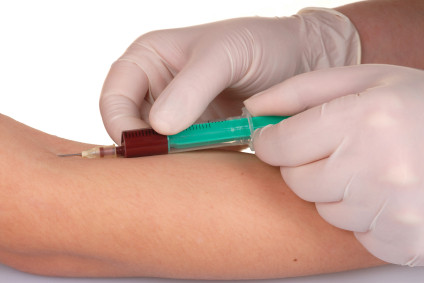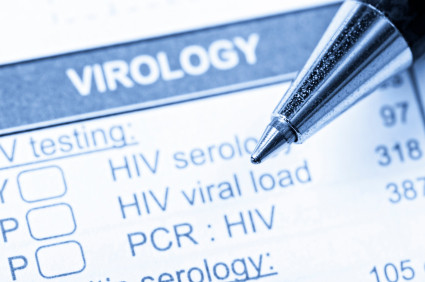HIV Lab Tests and Types of Testing for Diagnosis or Monitoring
HIV Lab Test vs Rapid Test
HIV testing can be broadly divided between rapid tests and laboratory tests. The rapid test can be done at home or at a screening facility and a result is available within minutes. It should be followed through with laboratory testing should there be a positive result. Although rapid tests are convenient, inexpensive and very accurate, there are greater chances of a false-positive reading. This means that a person is detected as being HIV-positive although they are not infected. Rapid tests also have a greater chance of a false-negative during the window period, usually around 2 to 6 weeks after infection. A false-negative means that a person is HIV-positive but the antibodies against the virus has not as yet been detected. Rapid tests detect the HIV antibodies in a person’s bloodstream and provide a positive reading based on the presence of these antibodies.
The term laboratory tests can sometimes be misleading because some rapid tests involves taking a sample of the blood, buccal cells, or rarely the urine and sending it to a laboratory for quick results. This procedure may not involve the participation of the doctor or other health care provider. However, it is generally accepted that rapid tests today provide on-site testing with immediate results, whether in the home or screening facility. Laboratory tests involve submitting a blood sample to a laboratory for various tests beyond just detecting the presence of HIV antibodies. Lab tests are necessary for any person who has been diagnosed as HIV-positive through the use of a rapid test. It can be done by a person who wishes to bypass the rapid test and be certain of more thorough and definitive result.
Reasons for HIV Testing
The main reason for testing is to ascertain whether a person is HIV-positive or not. HIV testing is routinely done in high risk individuals, for insurance purposes, screening for certain types of occupations, testing blood products, before certain surgical procedures or commencing with certain treatments and sometimes before marriage. These situations may not be applicable to every person or in every country. Regular testing is advisable for every person of any age who is sexually active (irrespective of orientation or marital status), who receives blood transfusions on a regular basis and/or is an IV drug user. Irrespective of the reason, the purpose of testing is to verify a person’s status.
Other types of testing is done on an HIV-positive person to monitor the progression of the disease and the response to treatment. This involves testing the number of immune cells which are usually targeted by the virus (CD4 cell count) and the amount of virus within the bloodstream (viral load). The results of these tests helps a doctor to determine the effectiveness of the treatment and whether the medication or dosage needs to be changed. Some types of tests can also determine whether the viral strain that a person is infected with is resistant to available antiretroviral treatment or not. Other tests can determine whether certain multi-drug resistant viral strains can still multiply in various concentrations of antiretroviral drugs. This helps the doctor decide upon the dosage and combination of drugs.
Types of HIV Lab Tests
Proteins on the surface of the virus are known as antigens. The immune system forms antibodies against these antigens. These antibodies then bind with the antigen. In this way the virus can be tagged and the immune response directed at the virus. The aim is to target the virus specifically for an effective defensive response. These antibodies may not be present at levels that can be detected within the first few weeks after infection. This is known as the window period. It can vary between 2 to 6 weeks, sometimes as long as 12 weeks, after infection. The period varies among individuals. Tests used to confirm a person’s HIV status detects these antibodies or antigens.
- HIV diagnosis tests confirms a person’s HIV status – whether HIV-positive or not. There are broadly two types of test which are used to detect the presence of HIV antibodies or antigens. HIV antigens are usually detectable at an earlier stage than the antibodies.
- HIV monitoring tests are used to monitor the disease progression and effectiveness of treatment. The two tests that are used for this purpose monitor the amount of virus in the bloodstream and the number of remaining CD4 T-cells, a type of immune cell that the virus targets and destroys.
HIV Diagnosis Tests
HIV-antibody tests detect the presence of antibodies against HIV and includes the ELISA and western blot tests. It is the more popular method of HIV screening because it is cost effective and the facilities for processing these tests are widely available. HIV-antigen tests detect the presence of the viral proteins and the main such test that is sometimes conducted is the p24 antigen test. It is able to confirm HIV infection much sooner than antibody tests but does require the virus to multiply to a degree that allows for the proteins to become detectable in the bloodstream. Antigen tests are more expensive and not routinely conducted.
ELISA
ELISA stands for enzyme-linked immunosorbent assay. It is among the more popular type of HIV antibody test and relatively inexpensive. It is an accurate test to determine that a person is NOT HIV-positive. In the event of a positive reading, a confirmatory western blot test is necessary due to the possibility of a false-positive. A negative reading should not be considered as conclusive as well since the antibodies may not be detectable during the window period.
Western blot
The western blot is another type of antibody test that is used to confirm a positive result with an ELISA test. It is more costly than an ELISA and therefore reserved as a confirmatory test. A positive western blot is conclusive for HIV infection. However, a negative result does not mean that a person is not infected because of the window period. Therefore the test should be repeated at a later stage.
p24 Antigen Test
The p24 antigen test detects the presence of certain viral proteins, specifically the core or capsid proteins. It may not be accurate immediately after infection as a period of time is required for the viruses to multiply to a sufficient degree. However, it may be able to detect the presence of the virus even during the window period. The p24 antigen test is only ordered when infection is suspected but the antibody tests produce a negative result and waiting for seroconversion (after the end of the window period) is not advisable.
HIV Monitoring
These tests determine the progress of HIV infection and onset of AIDS (acquired immune deficiency syndrome). It is also used to monitor the effectiveness of antiretroviral treatment. A viral load determines the quantity of viral genetic material. It can also be used to confirm the presence of the virus even during the window period. The CD4 count monitors the immune status of an HIV-positive person which is directly related to disease progressions.
Viral Load
Also known as the nucleic acid amplification test (NAAT) or the HIV PCR test, it detects the number of copies of viral RNA per milliliter of blood. This provides an indication of the amount of virus in the bloodstream. The test should be conducted immediately after confirming the diagnosis of HIV infection in order to establish a starting point of the virus population. It can also be done to determine HIV status but is a costly test that should rather be reserved for HIV monitoring along with a CD4 cell count.
CD4 Count
The CD4 T-helper cell is a type of immune cell that attacks and destroys invading pathogens, including viruses. HIV enters the CD4 cells, replicates using the cells resources and the destroys the cell. The CD4 count is therefore a useful tool in determining the progression of the disease. As the HIV population increases, it destroys more CD4 cells. CD8 cells are another type of immune cell which target infected cells and may rise as the HIV infection progresses. It can be expressed as the number of cells per millimeter cubed (mm3) which is equivalent to 0.001 mL, as a percentage or a CD4 to CD8 ratio.
Reference
- HIV. Lab Tests Online







